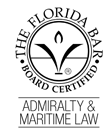Carnival Cruise Line’s Attempt to Dismiss Passenger’s Injury Lawsuit Fails
 A part of the allure of cruising is the excursions offered at the various ports of call. However, most passengers do not know the safety standards at these ports of call are a far cry from what they are used to in the United States. Decreased safety standards, unfortunately, result in several accidents to vacationers each year. Maritime law recognizes this problem. It requires cruise lines to warn of known dangers in places where their passengers are invited or expected to visit. It also requires cruise lines to properly vet the tour operators and excursions offered aboard their cruise ships. This law is designed to arm passengers with knowledge in order for them to make informed decisions on their safety while in foreign ports. Often times when a passenger sues for an injury occurring at a port of call, the cruise lines ask the court to dismiss the claim. These attempts to dismiss are met with varying success. The cruise injury attorneys of Brais law recently was required to address such a challenge by a cruise line.
A part of the allure of cruising is the excursions offered at the various ports of call. However, most passengers do not know the safety standards at these ports of call are a far cry from what they are used to in the United States. Decreased safety standards, unfortunately, result in several accidents to vacationers each year. Maritime law recognizes this problem. It requires cruise lines to warn of known dangers in places where their passengers are invited or expected to visit. It also requires cruise lines to properly vet the tour operators and excursions offered aboard their cruise ships. This law is designed to arm passengers with knowledge in order for them to make informed decisions on their safety while in foreign ports. Often times when a passenger sues for an injury occurring at a port of call, the cruise lines ask the court to dismiss the claim. These attempts to dismiss are met with varying success. The cruise injury attorneys of Brais law recently was required to address such a challenge by a cruise line.
Brais Law represents a Carnival Cruise passenger who broke her ankle when she fell down an unsafe stairway located in Chankanaab National Park during an excursion selected by the cruise line. The dangerous nature or the park’s stairways are well known to tour operators and companies doing business in the area. However, the unsafe nature of the stairway was not communicated to the cruise passengers.
The attorneys of Brais Law filed a complaint against Carnival in federal court alleging the cruise line was negligent as it had superior knowledge of the dangerous stairway but failed to warn its passengers of the dangers. The complaint also alleged the cruise line was negligent for selecting an excursion that takes place in an area known to be dangerous. Carnival asked the Court to dismiss the lawsuit alleging the complaint failed to state a legal cause of action. The Court rejected Carnival’s argument and allowed the claim to proceed. A copy of the Court’s order can be found here.
Though cruise lines are sometime successful in convincing courts to dismiss lawsuits concerning injuries occurring on an excursions, when facts exist that could prove the cruise line know or should have known of a danger and fails to warn its passengers, courts are likely to allow such claims to proceed.












